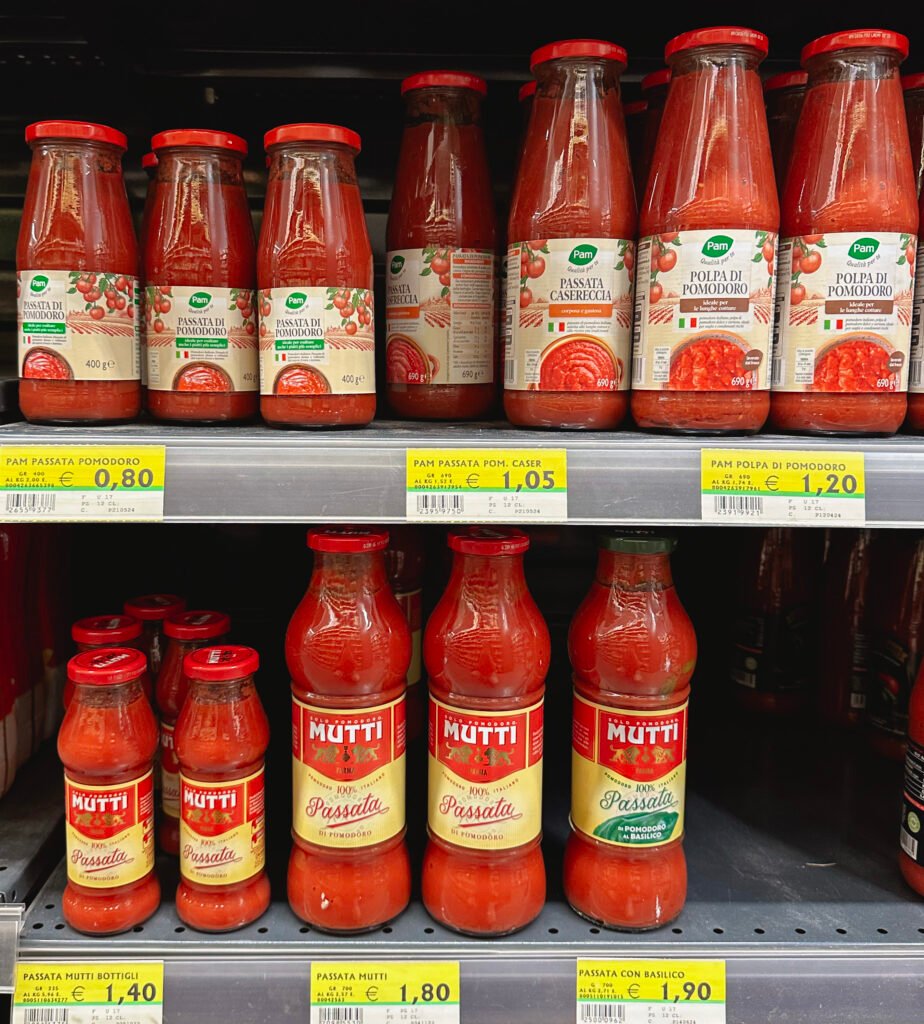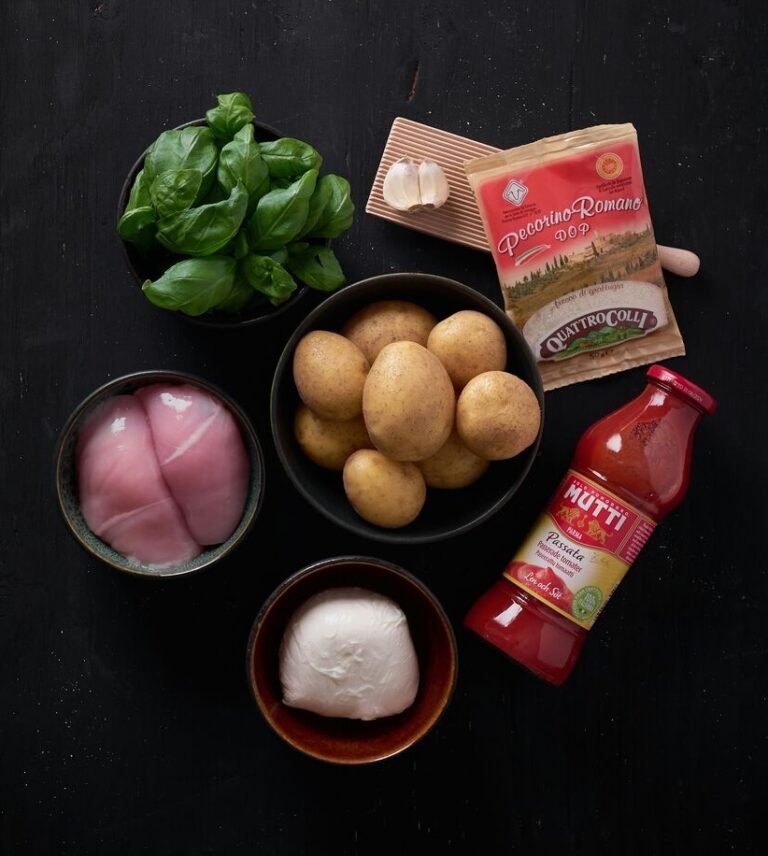- Photo by Icons8 Team on Unsplash
If you’ve recently visited Italy or simply love experimenting with Italian cooking, you’ve probably encountered two essential ingredients: tomato passata and tomato paste. Both are staples in Italian kitchens, but knowing how to use them correctly can make all the difference in your dishes.
In this article, “What is Tomato Passata? (And How It Differs From Tomato Paste),” I explore the key differences between these two popular tomato products and share tips on how to use them in your cooking.
Whether you’re navigating Italian grocery stores or just want to elevate your Italian recipes, understanding the difference between these two products is key to mastering authentic flavors.
What is Tomato Passata?
Tomato passata is a simple yet powerful ingredient in Italian cuisine. It’s made by pureeing fresh, ripe tomatoes and then passing them through a sieve to remove skins and seeds. The result? A smooth, uncooked tomato sauce with an incredibly fresh and light flavor.
If you’re used to canned tomatoes or tomato sauce, passata might surprise you. It’s a blank slate—just tomatoes, often with a pinch of salt, giving you the flexibility to season and cook it exactly how you like. Because it’s not cooked down like tomato paste, it retains a bright, fresh taste, making it ideal for quick pasta sauces, pizzas, or soups.
You will likely see passata everywhere in stores. It’s usually sold in large and small glass bottles or cartons, reflecting its importance in everyday Italian cooking. Once you start using it, you’ll see why Italians swear by it! In Italy, the average price of Passata di Pomodoro is around 1€, though premium brands or organic varieties can drive the cost higher.


- Photo by Max Griss on Unsplash
What is Tomato Paste?
Now let’s talk about tomato paste—another pantry staple, but with a completely different role. While passata is all about freshness, tomato paste is concentrated tomato flavor. It’s made by cooking tomatoes down for several hours to evaporate the moisture, then straining out the skins and seeds. The result is a thick, rich paste with intense flavor.
You’ll often find tomato paste in small cans or tubes because you only need a small amount to make a big impact. It’s perfect when you want to add depth and richness to a dish without adding too much liquid.
Visitors to Italy might recognize tomato paste as similar to what’s sold in tubes back home, but the key is using it sparingly. A little goes a long way!
Tomato Passata vs. Tomato Paste: The Key Differences
It’s easy to get confused about when to use passata versus paste, but understanding their differences will help you make better choices in the kitchen.
When to Use Tomato Passata
If you’re looking for a fresh tomato base, passata is your best friend. It’s perfect when you want to make a sauce quickly without spending hours in the kitchen. Here’s when you’ll want to reach for passata:
- Pasta sauces: Just sauté garlic in olive oil, add passata, and season to taste. It’s that easy!
- Pizza sauce: With its smooth texture, passata spreads perfectly on pizza dough, providing that authentic Italian flavor.
- Soups and stews: Passata adds a gentle tomato base without overpowering the other ingredients.
- Curries and global dishes: Since it’s not seasoned, passata can be used in various cuisines, not just Italian.
One of the best things about living in Italy is access to high-quality, affordable passata. Whether you’re picking up groceries from a local market or a large supermarket chain, you’ll find a wide variety of brands, each offering the same pure, simple ingredient: tomatoes.
When to Use Tomato Paste
Tomato paste is for those moments when you need big flavor in small quantities. Here’s when you should use it:
- Adding richness to sauces: A tablespoon of tomato paste can make a world of difference in sauces, adding depth without excess liquid.
- Boosting umami: Tomato paste brings a deep, savory flavor to dishes like casseroles, stews, and chili.
- Caramelizing for extra flavor: Sautéing tomato paste with onions or garlic before adding liquid helps caramelize the sugars, giving your dish a richer, more complex flavor.
If you’re making long-simmering dishes, tomato paste is your best friend. Just remember: it’s much more concentrated than passata, so you only need a small amount to get that powerful tomato punch.
Substituting Passata for Tomato Paste (or vice versa)
While passata and tomato paste aren’t directly interchangeable, you can adjust recipes if you’re in a pinch:
- Using passata in place of tomato paste: You can cook passata down to reduce its water content, but it won’t be as concentrated as tomato paste. Still, it’ll work if you need a substitute.
• Using tomato paste in place of passata: Thin out tomato paste with a little water or broth to mimic passata’s consistency, but keep in mind the flavor will be stronger, so use it sparingly.
Perfect the Art of Italian Cooking
Navigating Italian grocery stores can be a bit overwhelming at first, but understanding staples like tomato passata and tomato paste will transform your cooking experience.
Knowing when and how to use each will help you embrace Italian cuisine, no matter where you’re from. And there’s no better place to learn than in an authentic cooking class in Rome. Master the art of pasta making in our pasta & tiramisù class or combine your love for cooking and cocktails in our spritz & spaghetti cooking class!
Happening everyday in Rome!
Use our promo code 🍝CHEF20🍝 at checkout for a 20% discount!






